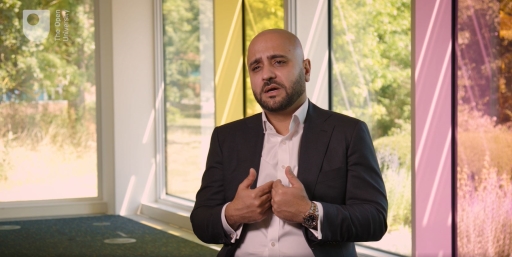3 Communication
Communicating messages of inclusion throughout your organisation, and sharing the impact of your actions, is an important way to let the workforce know that this a serious, on-going commitment.
Asif Sadiq explains why your communications should always be authentic and honest.

Transcript: Video 4: Being authentic
There are numerous ways in which effective communication can be used to benefit your organisation’s progress with diversity and inclusion.
In their study on the role of communication and employee engagement in promoting inclusion in the workplace, Afridah & Lubis (2024) spoke to employees and management representatives across a range of creative organisations, from advertising agencies and design firms to media companies and entertainment studios. Effective communication was identified as crucial, and the following examples were given:
- Regular newsletters or emails keeping employees informed about company news and initiatives
- Regular town hall meetings to promote dialogue and encourage employees to contribute their perspectives
- Feedback mechanisms such as open-door policies, surveys or suggestion boxes, enabling participation in organisational decision making.
Some organisations prefer to supplement their activities with more visual messages, such as RS Components ‘Bringing our true selves to work’ film:
Other organisations focus on creating written materials for use by themselves and clients in taking the agenda forward.
Arts Council England – culture change toolkit (Arts Council, no date)
Arts Council England offers this toolkit to help organisations across the creative sector follow best practice in recruitment and develop a diverse workforce and leadership.
It contains case studies reflecting real-life, sector-specific examples of good practice, alongside downloadable templates, checklists and other top tips.
If this sounds relevant to you, see Further reading for the link.
Activity 3 How does communication work in your organisation?
Take some time to reflect on the current methods of communication used in your business (or one you know well). Are they effective? Do you ever receive messages, whether verbal or visual, about diversity and inclusion? If you do – are they heard? Do you feel informed and included? Make notes in the box below.
Thinking about some of the communication tools and activities briefly discussed in this section – could any of those ideas make an effective addition to your current efforts?
Comment
Communication plays a key role in inclusion, whether that involves creating safe spaces for people to share their own experiences, encouraging difficult conversations, or keeping everyone up-to-date with progress. The more diversity and inclusion can become part of the conversation, the more it will feel like a normal part of day to day working life.
Policies
Another way to communicate diversity and inclusion messages is to ensure they run through your organisational policies and procedures. Nayika (2025) suggests 10 policies that your organisation should prioritise, in order to effectively address diversity and inclusion. These are:
- Equal opportunity employment policy
- Flexible work arrangements policy
- Anti-discrimination and anti-harassment policy
- Pay equity policy
- LGBTQIA+ inclusion policy
- Accessibility and disability inclusion policy
- Mental health and well-being policy
- Supplier diversity policy
- Inclusive leadership development policy
- Cultural sensitivity and awareness policy.
Phillips (no date) offers a guide to prioritising inclusion in policy development, which includes the following advice:
- Use inclusive language – inclusive pronouns, neutral terms and language that reflects a diverse range of perspectives and experiences
- Consider accessibility – use clear headings and bullet points, avoid jargon and provide alternative formats, such as audio or braille
- Incorporate stakeholder input – this can include employees, community members and individuals from marginalised groups
- Understand and address intersectionality – consider the unique challenges experienced by individuals who belong to multiple marginalised groups (you looked at this in Week 3)
- Promote equity and fairness – this will happen when you get policy development right.
Many organisations choose to formulate policy on specific discrimination characteristics, for example:
The Creative Equity Toolkit, run by Diversity Arts Australia and the British Council, offers numerous links to relevant resources in its section on developing an anti-racism policy. Although there is an arts sector bias, examples of action plans and anti-racism initiatives should be useful to all. See Further reading for the link.
For more ideas about reviewing and creating policies, see Further reading.
